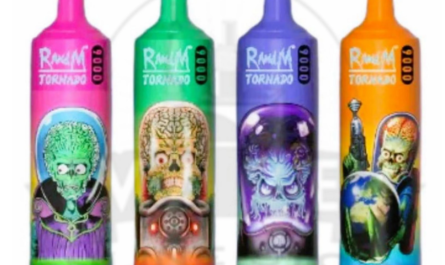Whether you are a new car owner or have been driving for years, protecting the exterior of your vehicle is necessary for its longevity and appearance. Paint Protection Films (PPFs) have been gaining popularity in recent years as a means to safeguard your investment and add some extra value to it. In this blog post, we will dive deep into the longevity and durability of ppf to help you decide if it is a worthy investment for your vehicle.
PPFs are made of thermoplastic urethane material, which is a clear, self-healing adhesive that is applied to the vehicle’s paint. This adhesive film has hydrophobic properties that prevent water, dirt, and grime from sticking to the surface. PPFs are also resistant to UV rays and can prevent fading, oxidizing, and premature discoloration of the paint. The lifespan of a PPF depends on several factors, including the quality of the film, driving conditions, and weather exposure.
The quality of a PPF typically determines its lifespan and durability. High-quality PPFs can last up to 10 years, whereas low-quality films may only last 1-2 years. The thickness of the film also plays a significant role in its longevity and protection capabilities. Thicker films provide better protection from rock chips, scratches, and other minor damages, and can last longer than thinner films. The manufacturer’s warranty is an excellent indicator of the quality of the film you are getting and the lifespan of the product.
PPFs are designed to withstand harsh weather conditions and protect the paint from sun damage. UV rays can degrade a vehicle’s paint, but a PPF can prevent it from happening. However, this does not mean that the film is impervious to damage. Harsh weather exposure can cause the film to yellow, crack, or peel, reducing its protective properties. Driving conditions, such as highway speeds, can increase the risk of rock chips, leading to damage on the PPF. Therefore, driving carefully and avoiding debris is crucial to prolonging the life of your PPF.
Regular maintenance of your PPF can help extend its lifespan and keep it in good condition. Washing your vehicle regularly, preferably with high-pressure water, can remove dirt and grime deposits from the surface. Using appropriate car soap and cleaning products can help prolong the film’s life and prevent damage from harsh chemicals. Avoiding waxing or polishing the PPF can also prevent damage from abrasive chemicals that can degrade the film’s properties.
Paint protection films (PPF) have been a popular addition to cars for years. These films are designed to protect the car’s paint from harmful elements such as debris, UV rays, and weather conditions. But how long do paint protection films last, and are they truly worth the investment? In this blog post, we will explore the longevity and durability of paint protection films.
Types of PPF: The first step to understanding the longevity and durability of paint protection films is knowing what type of film you have. There are two main types of PPF: self-healing films and non-self-healing films. As the name implies, self-healing films have the ability to repair themselves from minor damages such as swirl marks, scratches, and rock chips. On the other hand, non-self-healing films do not have this feature, and any damage sustained to the film is permanent. Non-self-healing films require replacement once damaged. The longevity of PPF depends on the type of film you have and how well it is maintained.
Maintenance: Maintaining your PPF plays a crucial role in its longevity. Regular washing with specialized cleaning products, avoiding harsh chemicals, and keeping the car covered during extreme weather can help prolong the life of the film. Additionally, it is best to avoid placing any stickers or other adhesive products on the PPF, as this can damage the film. Following these maintenance tips can extend the life of your PPF by up to 10 years.
Quality: The quality of the PPF also plays a crucial role in its longevity and durability. Investing in high-quality films with superior materials, advanced features, and rigorous testing can ensure that your PPF lasts longer than low-quality films. High-quality films are often more expensive, but the investment can pay off in the long run through extended protection and reduced maintenance costs.
Environmental Factors: Environmental factors, such as weather conditions and the number of miles driven, can also impact the lifespan of your PPF. For instance, cars exposed to harsh weather conditions such as heavy rain or snow may require more frequent cleaning and maintenance. Additionally, vehicles that are driven frequently may require PPF replacement sooner than cars that are driven less frequently.
Decision Making: Ultimately, the decision to invest in PPF depends on your priorities and budget. Considering the cost of PPF and the potential savings from reduced maintenance costs and value retention, paint protection films can be a wise investment for those seeking to protect their car’s paint. While some might argue that PPF is an unnecessary expense, the longevity and durability of the film speak for itself.
Conclusion:
In summary, choosing a high-quality PPF for your vehicle can provide excellent protection for up to 10 years. However, driving conditions, weather exposure, and maintenance play a significant role in the film’s longevity and durability. Consistent maintenance and careful driving practices can help extend the film’s life and keep your vehicle looking new. Consider investing in a high-quality PPF to help safeguard your investment, add some extra value to it, and protect it from the elements.
In conclusion, paint protection films can play an important role in protecting your car’s paint from various elements. The longevity and durability of PPF depend on several factors, including the type of film, quality, maintenance, and environmental factors. Investing in high-quality films, maintenance, and protecting your car from environmental factors can significantly extend the life of your PPF. Ultimately, PPF is a decision that depends on your priorities and budget, but the benefits of protecting your car’s paint through PPF speak for themselves.
